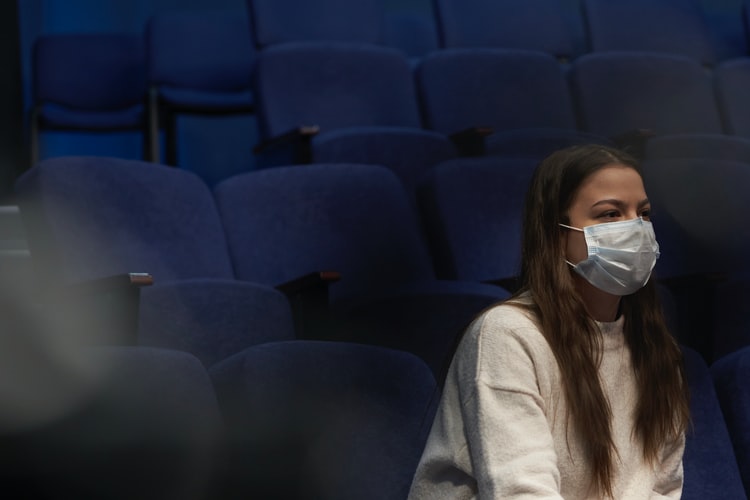

In this blog, JD Institute Of Fashion Technology, which is the oldest renowned institution for creative fields, has brought a discussion of some of the fashion industry leaders on the state of fashion post the period of the pandemic.
Diane Brady: What is the current state of the apparel industry?
Achim Berg: It’s a difficult situation. This has been a year unlike any other. It’ll be the toughest year for the retail and luxury industries after records have been kept. It’s unparalleled in terms of growth. That isn’t the same as a financial crisis. It’s perhaps more reminiscent of what people saw during the Great Depression. As a result, it’s been a really bad year for the industry.
Diane Brady: It’s understandable now, Anita. We’ve been stuck at home. In the last seven months, I haven’t left my house.” “The state of fashion is sweatpants,” someone said when I told her I was making this podcast. Is this just a case of apparent stores closing and sales being hampered as a result?
Anita Balchandani: Diane, you’ve posted an excellent query. It’s clear that sales in athleisure and casual wear have skyrocketed as a result of the pandemic. But, don’t forget, digital has evolved as well. Though overall industry revenues are down—no doubt, particularly earlier in the pandemic when food, health, and protection were much more critical to customers than fashion—what we have seen is a massive acceleration and phase shift in online platforms.
As of this year, 40% of the sales in several countries will be digital. Digital outlets have continued to expand as players have witnessed, shops have reopened. So we believe it has been one of the silver linings and places of growth that the industry has been able to explore and exploit over the last year.
Achim Berg: We’ve all seen a casualization of the workforce.
Diane Brady: What do you mean by casualization? That’s a fantastic word. What exactly does that imply?
Achim Berg: Dresses have become even more informal as a result. That, however, is not a COVID-19 invention. It’s been a long-standing trend: a move away from more formal attire, with relaxed Fridays occurring not just on Fridays but even Monday and Thursday. Working at home, without the constraints that come with working in an office, has an effect on how you look.
On the other hand, it’s important to remember that there aren’t many days when people dress up. Weddings have been delayed and cancelled. The concerts have been postponed. Thanks to the pandemic, a lot of culture and people-gathering had to be cancelled. All have an effect on how we wear, what we buy, and how we buy it.
Diane Brady: So, Anita, when I look at past posts, you do speak a lot about the revolution in the industry. Has this exacerbated any developments you were already keeping an eye on?
Anita Balchandani: What we’ve seen at COVID-19 is a continuation of many of the patterns that were already in place. We saw all of these developments before the crisis, whether it was interactive, sustainability, or even athleisure and casualization, there’s something for everybody. They’ve just gotten louder over the course of the crisis.
There have been a few incidents that can be directly attributed to the crisis. One is obviously international tourism, which has stalled in markets such as luxury and airline shopping. That was most likely one of the places where we saw a pattern stall or reverse. However, COVID-19 has accelerated many of the previously seen patterns in other areas.
Diane Brady: The propensity to alter, Achim, seems to be an incentive, doesn’t it? What are you doing to the public? Assume I’m a supermarket. I’m a designer company that’s currently on the wrong end of the spectrum. What options do I have?
Achim Berg: The first piece of good news is that it is fashionable. You will only play if you really grasp the patterns to find the product interesting solely from a product standpoint. But it’s a combination of art and science. In this industry, the art component will still be heavy.
It’s tough in terms of research. There are a couple of problems if you’ve skipped the digital ride, if you’re undercapitalized and don’t have the budgets to invest in the future, and if you have to struggle with a lot of the residue of what used to be a retail-dominated industry. A major consolidation may occur. But it also ensures that this consolidation will offer some breathing space and market-share opportunities for those who survive the recession and emerge stronger.
Diane Brady: So, does restructuring imply that the brands will be absorbed into a bigger conglomerate? Or is it possible that the labels will vanish?
Achim Berg: After the financial crash, we had a lot of what we call zombie brands, which were still there but undercapitalized, weren’t really in demand with customers but were still alive and kicking and making it from year to year. In this regard, the year 2020 was important. And the year 2021 will be no exception.
If you want to enter the world of fashion designing, JD Institute Of Fashion technology is just the right place to start your journey of success as it offers different types of fashion designing courses, etc. all of which are industry-based so that the students are ready for the real world or they are prepared to take on the challenges of life. Due to their unique style of teaching, outstanding contribution to education, and record-breaking placement of 99%, JD Institute reflects several awards such as leaders in education award, etc. Enroll now!